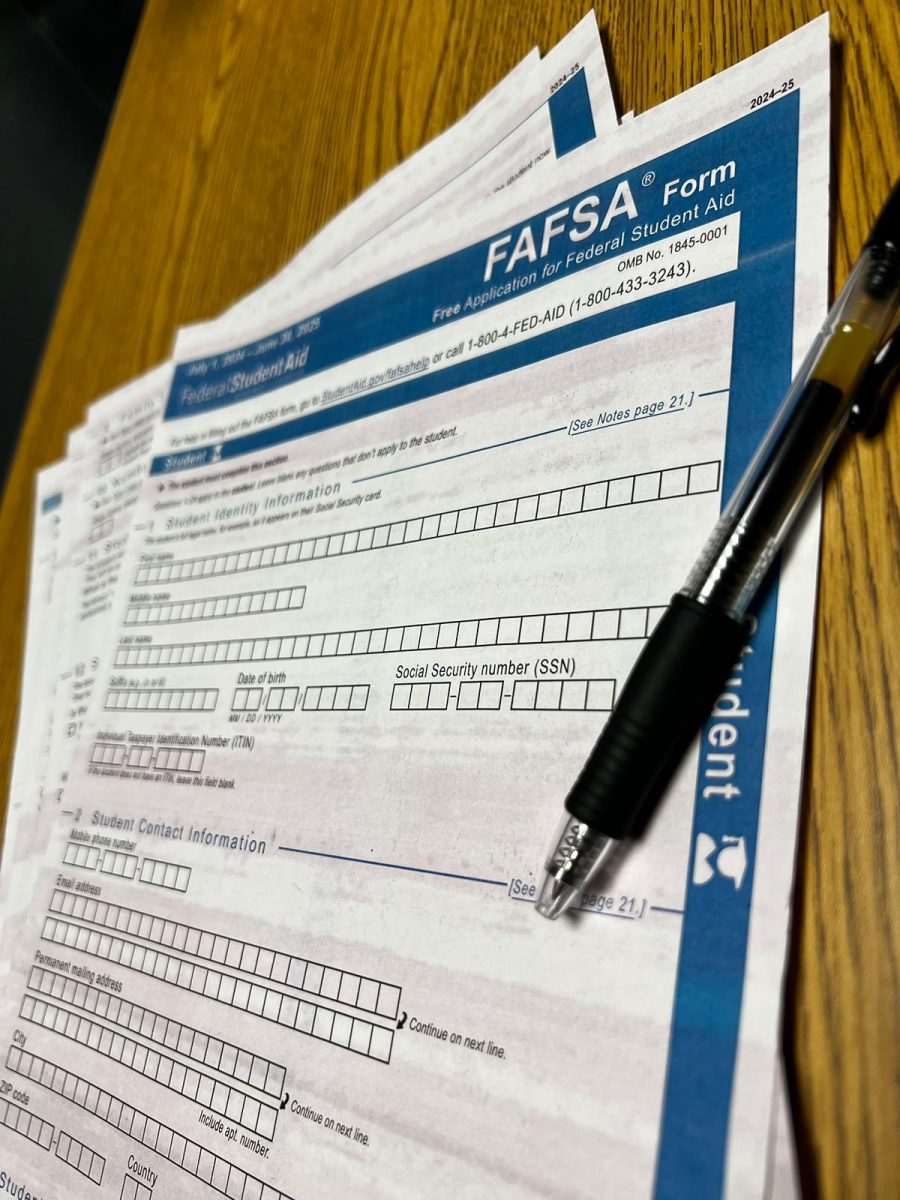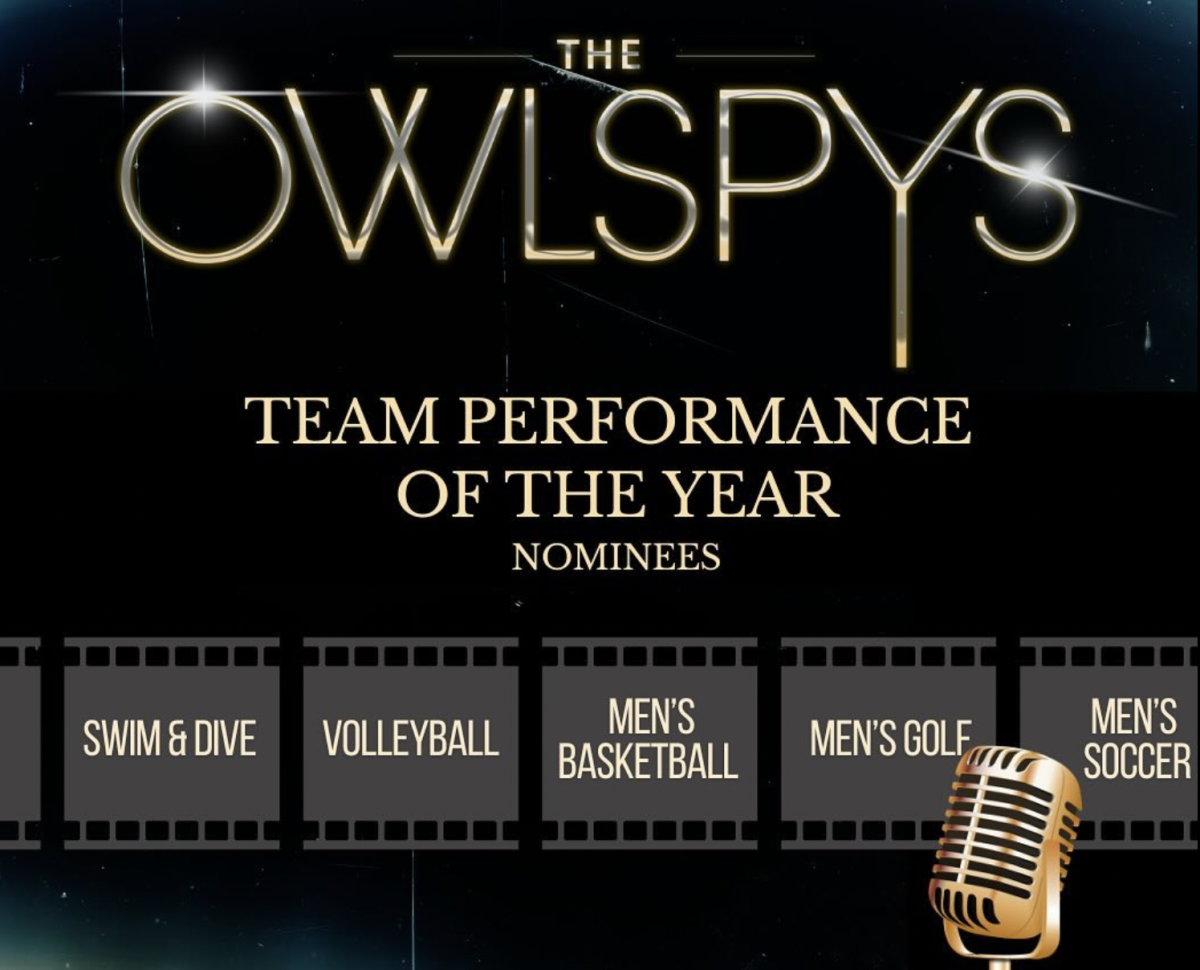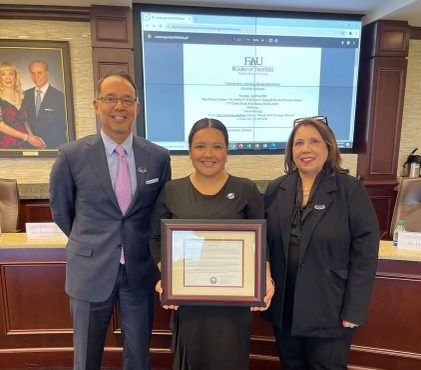
FAU psychology professor David J. Lewkowicz has been studying babies for about 30 years, and he recently made a breakthrough discovery.
Since 2009, Lewkowicz and graduate student Amy Hansen-Tift have observed over 200 babies — one at a time — in a gray, cubicle-esque lab inside room 117 of the Boca campus’ Behavioral Science building. The duo’s work has led them to discover what could potentially be a research breakthrough — babies try to “lip read” when they’re learning to talk.
Specifically Lewkowicz has been trying to figure out how babies use their senses to understand the world around them. He teamed up with Hansen-Tift and the pair’s experiments suggested infants between eight to twelve months old stare at the the mouth. Both younger and older babies have a tendency to stare at the eyes.
In this experiment, babies were seated in a high chair facing a video screen and shown four videos — two in English and two in Spanish — of two different women saying phrases like “Good morning” or “Buenos dias.” A soft headband was put on the baby’s head to monitor his or her focus. The equipment revealed that older babies exposed to new languages stared at the mouth, even if they had begun looking back at the eyes.
While parents were present during the experiments, they were not told what their babies were tested for until the end. Hansen-Tift explained she did not want the babies influenced in any way. At the end of the experiment, she said parents “leave with a feeling of accomplishment, because they feel like their baby helped science.”
The experiment began when Lewkowicz realized “There was no literature on what older babies do when someone is speaking to them.” In spite of a fascination with the subject, the study got off to a slow start. The testing of babies began in 2009, but Lewkowicz crafted the idea and bought the equipment five years earlier.
The delay mainly revolved around equipment glitches. When Hansen-Tift arrived at FAU from Ohio State University, the equipment was barely working on adults, let alone infants. It was not until the summer of 2009 that the problems were ironed out, and the lab was ready to recruit babies.
According to Lewkowicz, obtaining babies was pretty easy. The psychology department has access to local birth records, which meant getting a baby was often possible via a quick phone call. He estimated that the lab normally receives about 12 to 15 babies per week and Hansen-Tift mentioned many babies were children of FAU alumni or former psychology majors.
The babies selected for this study were typically developing — or learning at a normal rate — and raised in an English-speaking home. This was a one time experiment, but Hansen-Tift says she and Lewkowicz would like to bring some of the infants back. She confided, “We’ve been talking about it quite seriously. It’s a matter of working out the manpower to call all of these parents.”
Both Lewkowicz and Hansen-Tift expect their experiment will have an impact in the field. Lewkowicz explained the discovery “puts focus on paying attention to not only auditory cues, but visual cues as well.”
Lewkowicz and Hansen-Tift’s data has been published in the Proceedings of the National Academy of Sciences.

















